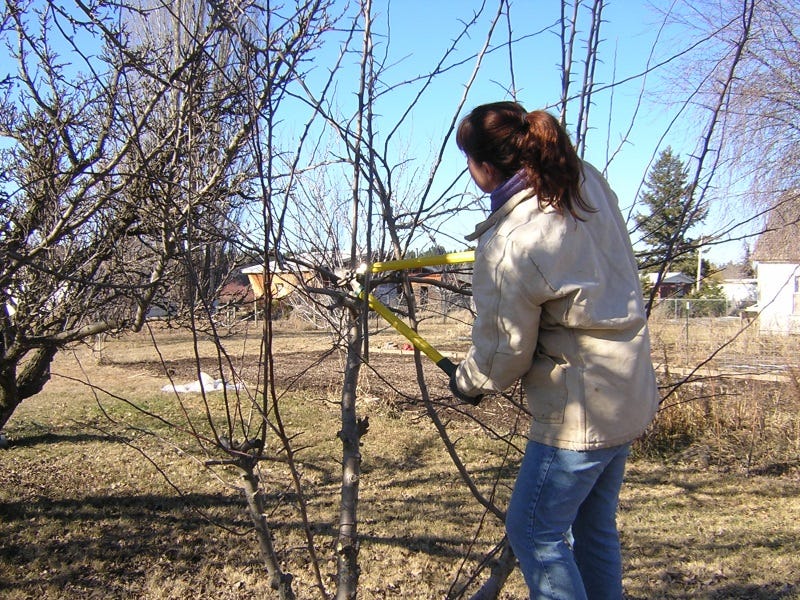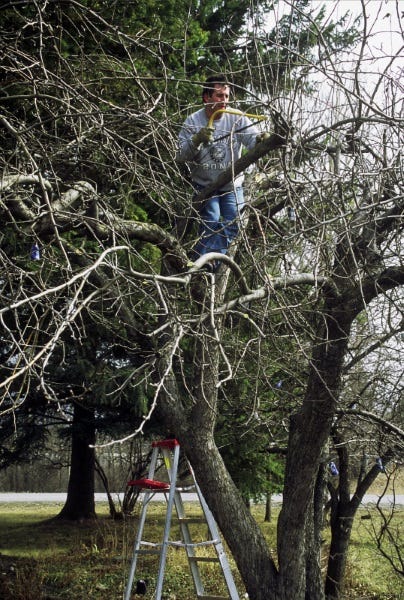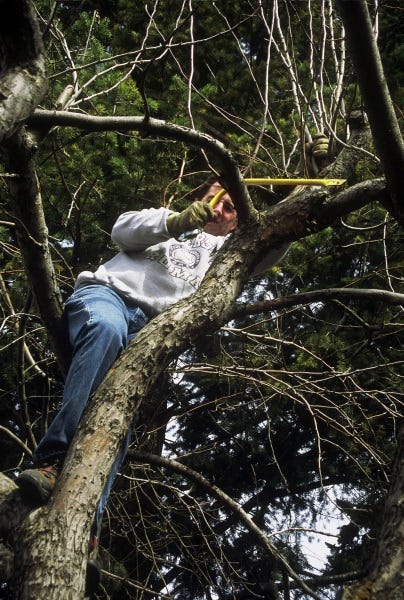Pruning Fruit Trees: When and How to Prune Fruit Trees


Even though it’s still winter, it’s time to take care of your fruit trees. Pruning allows you to control the shape and size of your tree (at least to some extent since you can’t make a standard variety stay the size of a dwarf), as well as creating a healthier specimen with larger and more abundant fruit.
What tools do you need to prune your trees?
Before you make the first cut gather the tools you need, and make sure they are clean and sharp. Hand clippers are invaluable for trimming out small branches or water sprouts, anvil or by-pass loppers can handle the bigger branches, and a small handsaw is useful for taking out the larger pieces. If you didn’t store them in the fall with a new edge on them, grab a rasp and do so now. Nothing is more frustrating than fighting with a little piece of bark that won’t cut because a blade is dull.
The other item you need, particularly in areas where fire blight is prevalent, is a way to clean the tools between each cut, or at least at the end of pruning each tree. If fire blight is a problem, using Clorox wipes after each snip will reduce the risk of spreading the bacterial infection from one branch to the next. Yet, even if blight is not a big issue, it’s still smart to soak the tools in a 10 percent bleach solution in between trimming each of the fruit trees, as well as at the end of your pruning day. Rinse and wipe your tools thoroughly afterwards to minimize the potential for rusting due to the bleach.

Form and Function: Considerations when Pruning Fruit Trees
When you’re looking at a fruit tree to prune, you want to focus on form as well as function. The first step is to remove any dead or damaged branches. Then take out any branches that are crossing over one another, grow downwards, or that you simply don’t like. If a limb is in your way when you mow, cut it off. Snip out any water sprouts, suckers or branches that grow straight up, as well. These are typically not productive features.
There are several pruning methods, varying from the open vase where the center is cleared to allow light to reach the branches, to a modified vase or even a central leader. The latter is probably the most popular method lately since it allows the tree to grow in a more natural shape while providing plenty of strong branches for heavy production.

When training your fruit tree in a central leader fashion, keep in mind that you are creating whorls with lateral branches stepping up the main trunk. Have your first branch start at approximately 24 inches from the ground, with the next lateral branch roughly six to eight inches above and away from the first one. Continue this pattern the entire way up the tree so the branches receive ample sunshine, and are kept within picking reach.
Beyond simply cutting out errant branches, part of properly training a tree involves encouraging the remaining branches to grow at angles best suited for strength and longevity, especially if you’re working with a young tree. Typically 45 to 60-degree angles are the strongest (or as close as you can get), and they can be created, if not formed naturally, by using spacers to spread the distance between the trunk and the branch, or by staking down the limb to encourage growth in that direction. As the branch grows in the desired direction, longer spacers are used to increased the space between the trunk and branch.

You can also cut off branches that are too long— by 30 percent—if necessary. Extra-long branches don’t produce well and tend to be in the way. So, prune them at the end of a bud at an angle. Plus, it just tends to look better. Fee free to cut back any branch that appears long and gangly.
Once you are finished pruning your fruit tree, you might be a little shocked by how much you removed. In reality, it might look like something out of a Dr. Seuss book, but rest assured, these seemingly brutal measures make your tree healthier, as well as more productive. Feel free to prune away.
